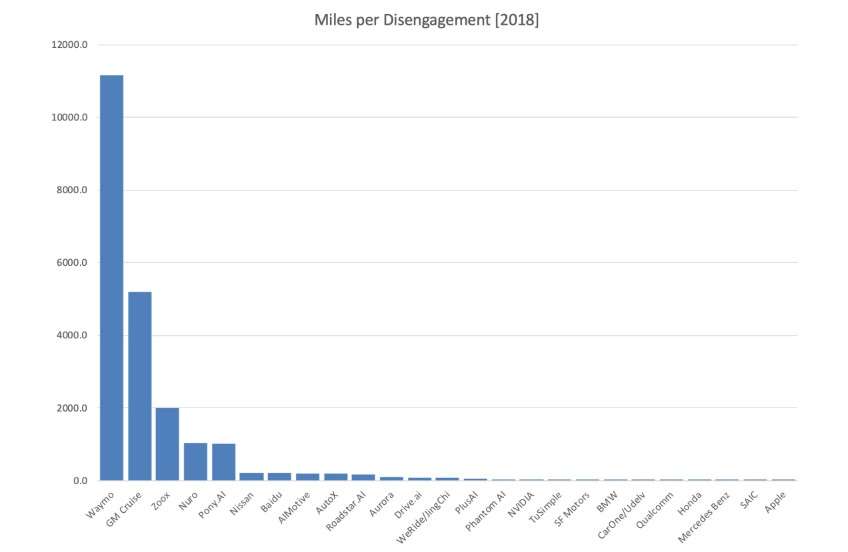The latest Department of Motor Vehicles official statistics on autonomous car fleets authorized to operate in California (United States) suggests that the Apple system would be the least efficient of all with regard to the disengagement of autonomous mode, ie to say when the human driver has to take back control.
Apple’s plans in terms of the autonomous car are surrounded by confusion. For a long time, the apple firm had been planning to build its own car without a driver, without any evidence of that.
In recent months, rumors have circulated that Apple has seriously reduced the wings by deciding to focus solely on the development of a software platform for autonomous driving that it could provide to third parties.
One thing is certain, the multinational has one of the largest fleets of autonomous cars allowed to run on open roads in California. Apple has 62 vehicles, Waymo , the subsidiary of Alphabet, 75 (2017 figure) and General Motors Cruise 162. The 28 companies authorized to run their autonomous cars must provide a detailed report every month to the Department of Motor Vehicles,the body that manages the registration of motor vehicles in the United States.
Among the information that must be communicated is the disengagement report, which indicates the number of times the safety driver in the car regains control of the autonomous system or when the latter switches off for the benefit of the driver. And given the statistics collected by The Last Driver License Holder , Apple has the highest number of disbursements in the rankings. These figures were calculated from the total distance traveled by each fleet of vehicles.

Apple’s less efficient technology? Not so fast …
Over the period from December 2017 to November 2018, Apple recorded an average of 871.65 disengagements for 1,000 miles traveled and a disengagement every 1.1 miles. Shown in kilometers, this gives 544.78 disengagements per 1,000 km and a disengagement every 1.8 km (on the basis of a total of 127,592 km traveled and 69,510 disengagements).
This is the highest rate of the ranking, suggesting that Apple drivers must take over the autonomous car far more often than other companies. At the other end of the spectrum, Waymo has an extremely low disengagement rate of 0.06 per 1,000 km and 17,846 km traveled without disengagement (out of a total of more than 2 million km traveled and 114 disengagements). GM Cruise comes in second with 0.12 disengagement per 1,000 km.
Should we conclude that Apple’s autonomous driving technology is mediocre? Not necessarily because other causes may explain these results.
For example, Apple’s self -driving cars may have very complex routes, their drivers may be overly cautious, or engineers may be testing specific aspects of the technology that may require more disengagement from the stand-alone mode. Disengagement reports are left to the declarants’ discretion, and some may take more liberties than others. It should also be noted that major car brands are no better than Apple. Mercedes-Benzis at a disengagement every 2.3 km and Honda is at a disengagement every 3.5 km.